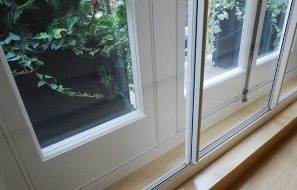How to Choose Between Double Glazing or Secondary Glazing
As energy efficiency becomes a hotter topic due to increasing prices of energy, fuel and the imminent arrival of global warming, many homeowners are starting to prepare for what could possible happen. In order to become more energy efficient, many UK residents have decided to cut the heat lost they are receiving from their windows. And there are actually two ways of doing this – one is through double glazing and the second is through secondary glazing.
Both of these options can effectively reduce the amount of heat loss your home is experiencing but how would you know which one is better for your home? First, we have to identify what are double glazed windows and its difference from secondary glazing.
Double glazed windows are windows with two glass sheets that usually have a heavy inert gas in between them that creates an insulating barrier. Its design helps slow the movement of heat from one side of the window to the other. Secondary glazing, on the other hand, involves the installation of a supplementary glazing on the inside of an existing single glazed window.


Double Glazing Secondary Glazing
Costs
In a nutshell, double glazed windows are basically a lot more expensive than secondary glazing simply because you need to install a new unit. It is impossible to simply fit just one more sheet of glass to your single glazing. On the other hand, secondary glazing is far cheaper because you simply have to install supplementary glazing on your existing window frame.
Installation
Installing secondary glazing is a lot easier than double glazing because, as mentioned before, you only have to fit supplementary glazing on your existing frame. You don’t have to replace anything on your existing window. This is easy enough for any homeowner to do with or without the DIY experience.
Double glazed windows are made to order windows. This means that an installer has to come over first to measure your windows and then manufacturing double glazed windows that fits your home. The installer can then replace your single glazed windows with double glazing in a span of 3 to 4 days. However, this is certainly not a DIY project.
Heat Loss Reduction
Heat lost is probably one of the main reasons why you’re planning to upgrade your windows. Double glazing wins this category over secondary glazing. Double glazing can cut about twice as much as secondary glazing can, saving you about £150 annually.
Another important thing that you should know about double glazing is that the return on your investment can be slow but definite. It can last for more than 20 years so you don’t have to worry about your windows needing replacement anytime soon. If you live in a listed building, conservation area, or any other location that needs planning permission, you can consider secondary glazing as your option to improve your home’s energy efficiency while still keeping the look of your home.


